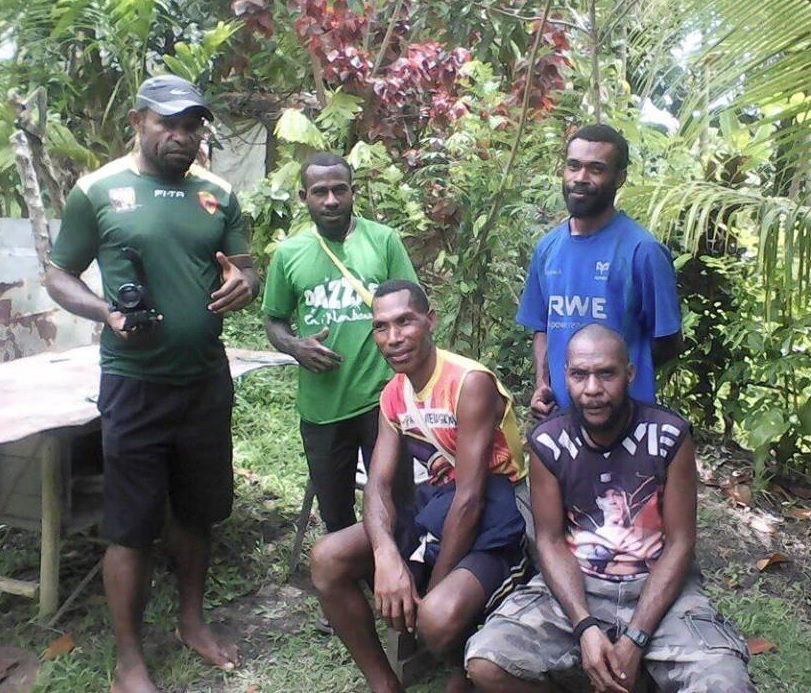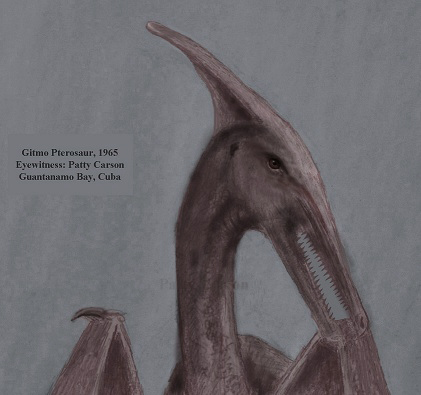By the living-pterosaur investigator Jonathan Whitcomb
Years ago, some skeptics speculated that reports of the ropen of Papua New Guinea came from people misidentifying the common fruit bats found there. Those critics, however, appear to have failed to take into account exactly what people report observing: something much larger and looking much different.
I received an email, in August of 2009, from a native of Papua New Guinea. Here is most of it, slightly edited into more standard English:
Hi my name is Rex Yapi. I’m a 2nd Year Business Accounting Student at the PNG University of Technology in Lae City.
I just want to remind you of the current sighting of the dragon named Ropen. I was on an out board motor as early as 9 am when we saw a giant creature floating along the coast line near Bunsil Bay. Its body was submerged under the sea but its tail was emerged. I saw that its tail is about 6-7 meters long with sharp diamond shape. It was an awesome scenerio and I started pointing to the others towards the object. It was floating 10 meters away from the boat and its color was
brownish-dark without any form of hair.Being in fear, we stopped the boat to let it pass by. Later I was told that, Bunsil Bay Coast Line up the Goosh River is the normal route which Ropen takes when it’s coming into Umboi Island from the mainland of PNG. It could not fly during sunlight hours so it has to at least swim and come into the island.
I wish I had a camera at that time because it was a frightening scene. Right now I’m looking for a camera to monitor this beast. I’m planning to take shots basing along the coastline in early hours between 5:00-6:00 am.
In addition, some of my relatives also spotted it a month ago.
Expeditions on Umboi Island
Rex got in touch with Luke Paina, who was my interpreter and body guard during my two-week expedition on Umboi Island (Siasi) in 2004. Yet other Americans have explored that tropical island, searching for the ropen, and other natives have guided them in their expeditions.
Expeditions there have included these (but not limited to them):
In the 1990’s, several Americans searched for the elusive ropen of Umboi, including Carl Baugh, Jim Blume, and Paul Nation. In 2004, I spent two weeks there searching for this apparent nocturnal pterosaur, but my success was in the interviews I was fortunate to get with important eyewitnesses, for I was not able to see the animal itself. A few weeks later, two other Americans, Garth Guessman and David Woetzel explored on Umboi, much of it being in other parts of the island than I had been in.
For several months now, as of early June of 2018, Rex Yapi Epa (the same native who wrote the eyewitness report near the top of this post), has been on an expedition with several other natives of PNG, as they have searched for the ropen. Yesterday was the official prayer day for their success, although I will continue to pray for them. They need to get good photographs of the ropen.
.
Rex (left, with camera) and other expedition team members
###
.
Jonathan Whitcomb really was in Papua New Guinea
I don’t know of anyone who has disputed the reality of my expedition on Umboi Island in 2004, but a few skeptics have tried to pin the label “deception” on me and my associates or on those we have interviewed, and many Westerners have a tendency to come to disbelieve in historical events as time carries us further away from the past.
.
Some people call it “dragon” or “flying dinosaur.” If you have seen one, then you’ll know it. You’ll know it’s not a legend and very much non-extinct.
.
A giant bioluminescent flying creature?
.
A living pterosaur in Papua New Guinea
Three Americans explored a tropical rain forest in Papua New Guinea, within the past few weeks, and two of them succeeded in observing an apparent living pterosaur. That’s better than the previous ten expeditions, over the past 21 years, at least in regard to direct observations of a flying creature . . .
.
Modern pterosaurs in the southwest Pacific
(and books about potential extant pterosaurs)
.
Nocturnal long-tailed pterosaurs in Papua New Guinea and elsewhere




